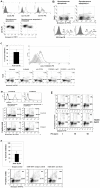Constitutive neutrophil apoptosis: regulation by cell concentration via S100 A8/9 and the MEK-ERK pathway
- PMID: 22363402
- PMCID: PMC3281816
- DOI: 10.1371/journal.pone.0029333
Constitutive neutrophil apoptosis: regulation by cell concentration via S100 A8/9 and the MEK-ERK pathway
Abstract
Programmed cell death (PCD) is a fundamental mechanism in tissue and cell homeostasis. It was long suggested that apoptosis regulates the cell number in diverse cell populations; however no clear mechanism was shown. Neutrophils are the short-lived, first-line defense of innate immunity, with an estimated t = 1/2 of 8 hours and a high turnover rate. Here we first show that spontaneous neutrophil constitutive PCD is regulated by cell concentrations. Using a proteomic approach, we identified the S100 A8/9 complex, which constitutes roughly 40% of cytosolic protein in neutrophils, as mediating this effect. We further demonstrate that it regulates cell survival via a signaling mechanism involving MEK-ERK via TLR4 and CD11B/CD18. This mechanism is suggested to have a fine-tuning role in regulating the neutrophil number in bone marrow, peripheral blood, and inflammatory sites.
Conflict of interest statement
Figures






Similar articles
-
S-glutathionylation regulates inflammatory activities of S100A9.J Biol Chem. 2010 May 7;285(19):14377-88. doi: 10.1074/jbc.M109.075242. Epub 2010 Mar 11. J Biol Chem. 2010. PMID: 20223829 Free PMC article.
-
Peroxynitrite induces integrin-dependent adhesion of human neutrophils to endothelial cells via activation of the Raf-1/MEK/Erk pathway.FASEB J. 2001 Jan;15(1):25-27. doi: 10.1096/fj.00-0521fje. Epub 2000 Nov 9. FASEB J. 2001. PMID: 11099490
-
S100A9/S100A8: Myeloid representatives of the S100 protein family as prominent players in innate immunity.Microsc Res Tech. 2003 Apr 15;60(6):569-80. doi: 10.1002/jemt.10299. Microsc Res Tech. 2003. PMID: 12645005 Review.
-
Inflammation: Soluble MRP8/14 recruits neutrophils via TLR4.Nat Rev Rheumatol. 2015 Jun;11(6):320. doi: 10.1038/nrrheum.2015.63. Epub 2015 May 5. Nat Rev Rheumatol. 2015. PMID: 25939419 No abstract available.
-
Regulation of neutrophil survival/apoptosis by Mcl-1.ScientificWorldJournal. 2011;11:1948-62. doi: 10.1100/2011/131539. Epub 2011 Oct 26. ScientificWorldJournal. 2011. PMID: 22125448 Free PMC article. Review.
Cited by
-
Genome-wide postnatal changes in immunity following fetal inflammatory response.FEBS J. 2021 Apr;288(7):2311-2331. doi: 10.1111/febs.15578. Epub 2020 Oct 24. FEBS J. 2021. PMID: 33006196 Free PMC article.
-
House Dust Mite Allergen Regulates Constitutive Apoptosis of Normal and Asthmatic Neutrophils via Toll-Like Receptor 4.PLoS One. 2015 May 14;10(5):e0125983. doi: 10.1371/journal.pone.0125983. eCollection 2015. PLoS One. 2015. PMID: 25973752 Free PMC article.
-
Role of Neutrophils in Systemic Vasculitides.Front Immunol. 2020 Dec 17;11:619705. doi: 10.3389/fimmu.2020.619705. eCollection 2020. Front Immunol. 2020. PMID: 33391289 Free PMC article. Review.
-
Oral neutrophil transcriptome changes result in a pro-survival phenotype in periodontal diseases.PLoS One. 2013 Jul 11;8(7):e68983. doi: 10.1371/journal.pone.0068983. Print 2013. PLoS One. 2013. PMID: 23874838 Free PMC article.
-
Induction of human IL-10-producing neutrophils by LPS-stimulated Treg cells and IL-10.Mucosal Immunol. 2016 Mar;9(2):364-78. doi: 10.1038/mi.2015.66. Epub 2015 Jul 29. Mucosal Immunol. 2016. PMID: 26220165
References
-
- Ellis RE, Yuan JY, Horvitz HR. Mechanisms and functions of cell death. Annu Rev Cell Biol. 1991;7:663–698. - PubMed
-
- Krammer PH. CD95′s deadly mission in the immune system. Nature. 2000;407:789–795. - PubMed
-
- Stark MA, Huo Y, Burcin TL, Morris MA, Olson TS, et al. Phagocytosis of apoptotic neutrophils regulates granulopoiesis via IL-23 and IL-17. Immunity. 2005;22:285–294. - PubMed
Publication types
MeSH terms
Substances
LinkOut - more resources
Full Text Sources
Other Literature Sources
Research Materials
Miscellaneous

